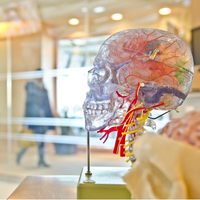The Miracles of Medicine
January 30, 2023
Brief:
- Researchers have found that harvesting and storing energy from body movements such as breathing may eliminate the need to change the batteries in deep-brain stimulators.
- A new study in Cell Reports, “A Biomechanical Energy Harvester to Power Deep Brain Stimulation,” details how a team of researchers recently developed and tested a new design, an energy harvesting device to implant next to the chest.
- In theory, this technology could make patients’ lives easier and end the need to undergo surgery every few years to replace batteries in deep-brain stimulators. The next step is testing the technology on a large animal before proceeding further.
While DBS devices can treat neurological and psychiatric diseases, they require surgery every two to three years to replace batteries.
DBS devices that treat neurological and psychiatric diseases function like the human brain by sending electrical impulses generated by replaceable batteries to specific brain parts.
Researchers in Connecticut are close to developing a sustainable power system for Deep Brain Stimulation that would eliminate the cost and other disadvantages of the battery replacement procedure.
Islam Mosa, scientist and chief technology officer of VoltXon, says: “This is the first system that combines all the pieces; efficient energy harvesting, energy storage, and the controlled brain stimulator.”
The paper examines using a bio-supercapacitor to power an implantable neural stimulator. The device can stimulate neurons in the mouse hippocampus, located in the limbic system, and is associated with memory. The “paper” describes how this device could be used for patients with brain injuries or diseases.
The research was published just weeks after another paper about a light-powered pacemaker, talking about how, while pacemakers have longer battery lives than DBS devices (typically seven to ten years), they still require battery replacements and surgery.
Researchers have been experimenting with light for decades, looking for a way to control the human heart. The latest breakthrough in this field led to a new pacemaker using light as a stimulus instead of electricity.
Recent News

November 07, 2023
UT Arlington’s Smart Hospital: Innovations and Advancements
The University of Texas at Arlington (UT Arlington) innovative hospital has […]
Read More
October 22, 2023
Healthcare’s 2023 Dilemma: Staffing Gaps
The healthcare sector in the US is grappling with a significant […]
Read More
